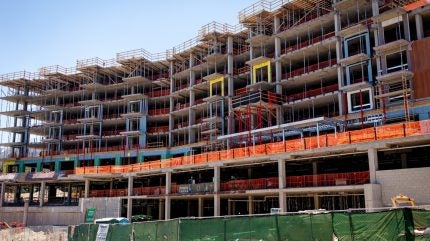
The number of hotel rooms under construction in the United States fell for the sixth straight month in June 2025, reaching its lowest point in five years, according to CoStar’s latest data.
The total stood at 138,922 rooms, an 11.9% decrease compared to June 2024. This marks a significant slowdown in hotel development, reflecting broader economic challenges and shifting market dynamics.

Discover B2B Marketing That Performs
Combine business intelligence and editorial excellence to reach engaged professionals across 36 leading media platforms.
Economic uncertainty and rising costs dampen development
Analysts attribute the decline to several factors, including reduced demand for hotel stays, persistent economic uncertainty, and escalating construction costs.
Isaac Collazo, senior director of analytics at STR, noted that the current environment has led to a 20-quarter low in the number of rooms under construction.
He added that more than half of the rooms in development are located in the Southern United States, primarily outside the top 25 metropolitan markets, with many projects still in the early planning stages and unlikely to commence construction soon.
Regional trends and market focus
The Southern region accounts for over half of all rooms currently under development, with a significant portion situated outside major metropolitan areas.

US Tariffs are shifting - will you react or anticipate?
Don’t let policy changes catch you off guard. Stay proactive with real-time data and expert analysis.
By GlobalDataDespite the overall slowdown, the upscale and upper upscale segments continue to dominate new developments, comprising the majority of rooms under construction.
These segments remain the focal point for developers, even as the number of new projects is expected to decrease in the near future.
Future outlook for hotel development
Looking ahead, the hotel construction pipeline remains active, with 349,802 rooms in the planning phase, a 4.8% increase from the previous year.
However, the majority of these projects are still in the early stages, and many may face delays or cancellations due to ongoing economic pressures.
The industry will need to navigate these challenges carefully to maintain a balanced and sustainable development trajectory.
The sustained decline in hotel construction underscores the need for developers and investors to adapt to the current economic landscape.
While the planning phase shows some growth, the actualisation of these projects will depend on the resolution of economic uncertainties and the stabilization of construction costs.





